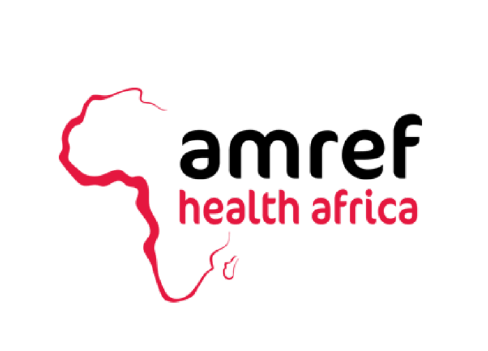Climbing Mount Kilimanjaro, the highest peak in Africa, is a bucket-list adventure that demands careful preparation. Standing at 19,341 feet, this majestic free-standing mountain takes you through five distinct ecological zones, from lush rainforests to the icy arctic summit. Whether you’re a beginner or an experienced trekker, having the right gear is critical for a safe, comfortable, and successful climb. In this comprehensive guide, we’ll walk you through the essential Kilimanjaro packing list, tailored for each climate zone, with budget-friendly tips and rental options available through Africa Paradise Adventures. Ready to conquer the Roof of Africa? Let’s dive into the ultimate gear checklist!
Why a Proper Packing List Matters for Kilimanjaro

Mount Kilimanjaro’s diverse climate zones—rainforest, heath, moorland, alpine desert, and arctic summit—present unique challenges. Temperatures can range from a humid 25–35°C (77–95°F) in the lower zones to a bone-chilling -20°C (-4°F) at Uhuru Peak. Weather can shift rapidly, with rain, fog, and high winds common, especially during the rainy seasons (April–May and November–December). A well-planned packing list ensures you stay warm, dry, and comfortable while minimizing weight to respect porter weight limits (typically 15 kg/33 lbs for your duffel bag). With Africa Paradise Adventures, group equipment like tents, oxygen tanks, and cooking supplies is provided, so you can focus on personal gear.
Essential Gear for Climbing Mount Kilimanjaro

Below, we break down the must-have items for your Kilimanjaro trek, organized by category and ecological zone, to ensure you’re prepared for every condition.
- Clothing: Layering for All Conditions
Layering is key to adapting to Kilimanjaro’s fluctuating temperatures and weather. You’ll need base layers, mid-layers, and outer layers to stay comfortable across the mountain’s five zones.
Base Layers
- Purpose: Wicks moisture away from your skin to keep you dry during strenuous trekking.
- Recommendation: 3–4 moisture-wicking short-sleeve shirts (merino wool or synthetic) and 1–2 long-sleeve shirts for cooler zones. Avoid cotton, as it retains moisture and can cause chafing.
- Ecological Zones: Essential in the humid rainforest (800–3,000m) and heath zones (3,000–4,000m), where sweat is common, and useful in higher zones to prevent clamminess.
- Brands: Smartwool, Icebreaker, or The North Face.
Mid-Layers
- Purpose: Provide insulation to retain body heat in cooler zones.
- Recommendation: 1–2 fleece jackets or pullovers and 1 pair of insulated trekking pants (fleece-lined for warmth).
- Ecological Zones: Critical in the moorland (4,000–4,800m) and alpine desert (4,800–5,000m), where daytime temperatures average 15°C (59°F) and nights drop to -10°C (14°F).
- Brands: Marmot, Columbia, or Arc’teryx.
Outer Layers
- Purpose: Protect against wind, rain, and extreme cold.
- Recommendation:
- 1 waterproof, breathable jacket (Gore-Tex or equivalent) that doubles as a windbreaker.
- 1 pair of waterproof overpants with stretch or zippers for easy wear over boots.
- 1 down jacket or puffer for summit night and chilly evenings.
- Ecological Zones: Vital in the alpine desert and arctic summit (5,000–5,895m), where temperatures can plummet to -20°C (-4°F) and winds are fierce.
- Tip: Look for two-in-one jackets to save weight, as recommended by Follow Alice.
Footwear
- Purpose: Ensure comfort, support, and protection against blisters and wet conditions.
- Recommendation:
- 1 pair of waterproof, mid-weight hiking boots with good ankle support (e.g., Salomon GTX). Break them in on shorter hikes to avoid blisters.
- 1 pair of lightweight camp shoes (e.g., sandals or sneakers) for relaxing at camp.
- 3–4 pairs of mid-weight hiking socks (merino wool or synthetic) and 2–3 pairs of lightweight liner socks for summit night.
- 1 pair of gaiters to keep mud, scree, and snow out of your boots.
- Ecological Zones: Waterproof boots are crucial in the muddy rainforest and snowy summit zones. Gaiters are especially useful in the moorland and alpine desert.
- Tip: Test boots for waterproofing by standing in water before your trip, as advised by Adventure Out Loud.
Headwear and Accessories
- Purpose: Protect against intense UV rays, dust, and cold.
- Recommendation:
- 1 wide-brimmed sunhat or cap for lower zones.
- 1 warm knit hat (fleece or wool) covering ears for higher zones.
- 1 neck gaiter or buff for dust and warmth.
- Sunglasses (category 3 or 4) for UV and ice glare protection.
- Ecological Zones: Sunhats are essential in the rainforest and heath zones, while knit hats and gaiters shine in the alpine desert and summit.
- Brands: Buff Original, Ray-Ban, or Oakley.
- Trekking Equipment
Sleeping Gear
- Purpose: Ensure restful sleep in freezing conditions.
- Recommendation: A 4-season or -20°C (-4°F) rated sleeping bag with a compression sack. An inflatable pillow and insulated sleeping mat (provided by Africa Paradise Adventures) enhance comfort.
- Ecological Zones: Critical from the second night at 11,500 feet (moorland) to the summit, where nights are freezing.
- Rental Option: Africa Paradise Adventures offers sleeping bag rentals in Tanzania, saving you from purchasing expensive gear.
Daypack and Duffel Bag
- Purpose: Carry daily essentials and store gear for porters.
- Recommendation:
- A 20–30L daypack with a rain cover, hip belt, and hydration bladder compatibility (e.g., Black Diamond or Osprey).
- A 50–90L waterproof duffel bag (e.g., The North Face Basecamp) for porters to carry, not exceeding 15 kg.
- Dry bags or packing cubes for extra protection inside the duffel.
- Ecological Zones: The daypack is used daily across all zones, while the duffel is critical for keeping gear dry in the rainforest.
- Tip: Soft duffels are preferred, as porters carry them on their heads.
Trekking Poles
- Purpose: Improve balance, reduce knee strain, and aid stability on uneven terrain.
- Recommendation: Collapsible, lightweight poles (aluminum or carbon fiber) with rubber or foam grips (e.g., Black Diamond).
- Ecological Zones: Useful in all zones, especially on steep descents and uneven surfaces in the moorland and alpine desert.
- Rental Option: Available through Africa Paradise Adventures in Moshi.
Hydration
- Purpose: Stay hydrated to combat altitude effects.
- Recommendation: A combination of a 2–3L hydration bladder (e.g., Camelbak or Platypus) and a 1L Nalgene bottle. Plastic bottles are banned in Kilimanjaro National Park.
- Ecological Zones: Essential across all zones, with 3–4L daily intake recommended. Nalgene bottles can double as hot water bottles at night.
- Health and Personal Items
Sun Protection
- Purpose: Guard against intense UV rays at high altitudes.
- Recommendation: SPF 50+ sunscreen, lip balm with SPF, and zinc cream. Reapply throughout the day.
- Ecological Zones: Critical in all zones, especially the alpine desert and summit, where UV exposure is extreme.
First-Aid Kit
- Purpose: Address minor injuries and health issues.
- Recommendation: Include bandages, antiseptic wipes, pain relievers (e.g., Ibuprofen), blister pads, and personal medications. Diamox (125mg twice daily) is recommended for altitude sickness prevention—consult your doctor.
- Tip: Africa Paradise Adventures’ guides carry medical kits, but personal supplies are essential.
Hygiene
- Purpose: Maintain cleanliness with limited water access.
- Recommendation: Wet wipes, biodegradable soap, toothbrush, toothpaste, hand sanitizer, and a small travel towel. For long hair, consider dry shampoo.
- Ecological Zones: Wet wipes and sanitizer are lifesavers in all zones, as showers are unavailable, and only basins of warm water are provided.
Other Essentials
- Headlamp: For summit night and nighttime camp navigation (with extra batteries).
- Power Bank: To charge electronics, as there are no power outlets on the mountain.
- Toiletries: Include toilet paper, matches, and feminine products if needed.
- Snacks: High-calorie, lightweight options like energy bars, nuts, or chocolates for summit night.
- Documents: Passport (valid for 6+ months), Tanzanian visa ($50–$100), travel insurance covering high-altitude trekking, and cash ($200–$300 for tips and souvenirs).
Gear for Each Ecological Zone
Zone | Altitude | Conditions | Key Gear |
Rainforest | 800–3,000m | Hot, humid, rainy | Waterproof boots, rain jacket, sunhat, moisture-wicking base layers |
Heath/Moorland | 3,000–4,000m | Cooler, misty, windy | Fleece mid-layers, gaiters, trekking poles, hydration bladder |
Alpine Desert | 4,000–5,000m | Cold, dry, windy | Down jacket, waterproof overpants, warm hat, sunglasses |
Arctic Summit | 5,000–5,895m | Freezing, snowy, high UV | 4-season sleeping bag, thermal gloves, insulated socks, Diamox, headlamp |

Group Equipment Provided by Africa Paradise Adventures
Africa Paradise Adventures takes care of the heavy lifting, providing essential group equipment to lighten your load:
- Tents: High-quality, weather-resistant tents for all camps.
- Oxygen Tanks: For emergency use at high altitudes.
- Cooking Supplies: Including stoves, fuel, and fresh meals prepared by a personal chef.
- Camp Equipment: Tables, chairs, and foam-covered mattresses for comfort.
This allows you to focus on personal gear while our expert guides and porters ensure a seamless experience.
Downloadable Kilimanjaro Packing Checklist
To simplify your preparation, use this concise checklist to ensure you have all the essentials:
Category | Item | Quantity | Notes |
Clothing | Moisture-wicking base layers | 3–4 shirts | Merino wool or synthetic, short/long-sleeve |
Fleece jacket/pullover | 1–2 | For moorland and alpine desert | |
Waterproof jacket | 1 | Gore-Tex, doubles as windbreaker | |
Waterproof overpants | 1 | Stretch or zippered for easy wear | |
Down jacket | 1 | For summit night and evenings | |
Hiking boots (waterproof) | 1 pair | Broken in, mid-weight, ankle support | |
Camp shoes | 1 pair | Lightweight sandals or sneakers | |
Hiking socks | 3–4 pairs | Merino wool or synthetic | |
Liner socks | 2–3 pairs | For summit night | |
Gaiters | 1 pair | To keep out mud and scree | |
Sunhat | 1 | Wide-brimmed for lower zones | |
Knit hat | 1 | Fleece or wool for summit | |
Neck gaiter/buff | 1 | For dust and warmth | |
Sunglasses | 1 | Category 3 or 4 for UV protection | |
Trekking Gear | 4-season sleeping bag | 1 | -20°C rated, with compression sack |
Daypack (20–30L) | 1 | With rain cover and hip belt | |
Duffel bag (50–90L) | 1 | Waterproof, max 15 kg for porters | |
Dry bags/packing cubes | 2–3 | For extra protection | |
Trekking poles | 1 pair | Collapsible, lightweight | |
Hydration bladder (2–3L) | 1 | Plus 1L Nalgene bottle | |
Health/Hygiene | Sunscreen (SPF 50+) | 1 | Reapply frequently |
Lip balm (SPF) | 1 | Zinc cream recommended | |
First-aid kit | 1 | Bandages, antiseptic, Ibuprofen, Diamox | |
Wet wipes | 1 pack | For hygiene, no showers available | |
Biodegradable soap | 1 | For basin baths | |
Hand sanitizer | 1 | Travel-sized | |
Travel towel | 1 | Small, quick-drying | |
Toilet paper/matches | 1 | For trail use | |
Electronics/Other | Headlamp | 1 | With extra batteries |
Power bank | 1 | For charging electronics | |
Snacks | 5–6 | High-calorie (chocolates, nuts, energy bars) | |
Passport/Visa | 1 | Valid 6+ months, $50–$100 for visa | |
Cash | $200–$300 | USD for tips and souvenirs | |
Travel insurance | 1 | Must cover high-altitude trekking |
Top Tips for Packing Smart
- Pack Light: Respect porter weight limits (15 kg) and prioritize multi-use items to reduce bulk.
- Test Gear: Break in boots and test your daypack on shorter hikes to ensure comfort.
- Carry Essentials: Pack boots, sunglasses, and critical documents in your carry-on to avoid issues with lost luggage.
- Check Weather: Monitor forecasts for your trek dates (dry seasons: January–March, June–October) to adjust layers.
- Plan for Tips: Bring USD in small bills for tipping guides and porters ($200–$300 recommended).
Why Choose Africa Paradise Adventures?
At Africa Paradise Adventures, we make your Kilimanjaro trek seamless and unforgettable. Our expert guides, premium itineraries (like the 8-day Lemosho Route), and comprehensive support ensure you’re fully prepared. We provide group equipment, rental options, and a 40-





